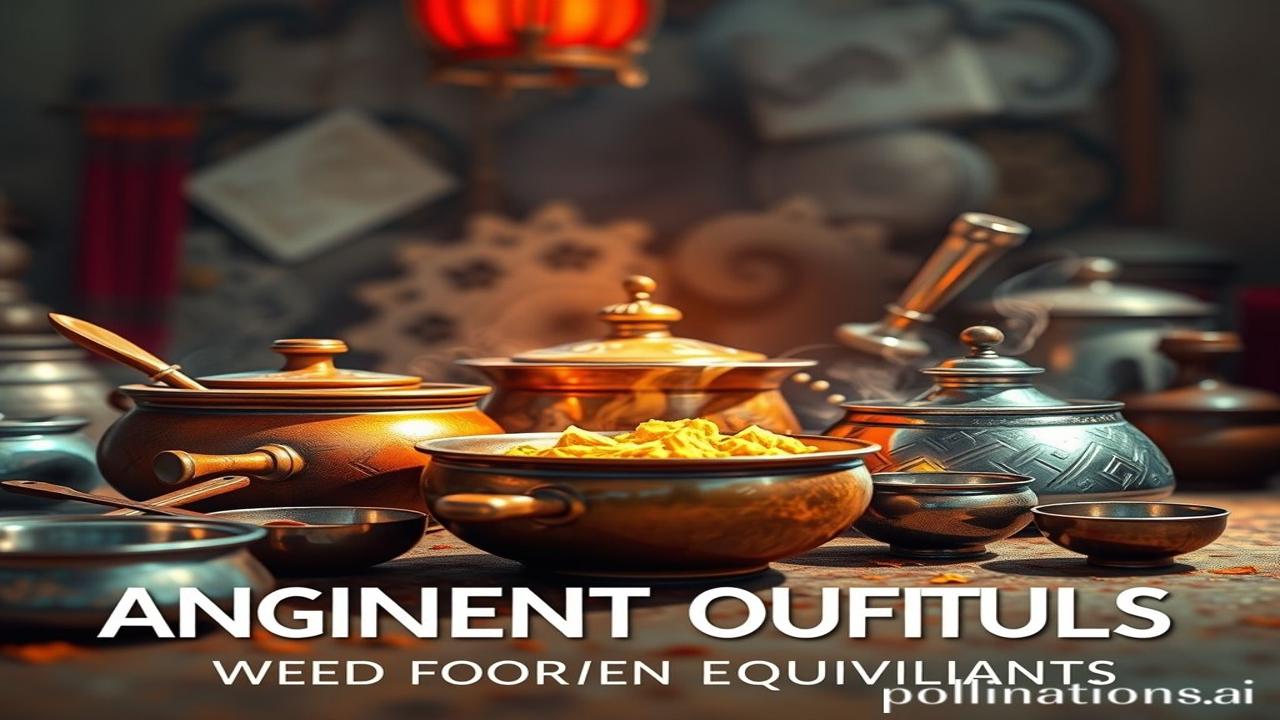Dhool Mein Chhupe Raaz: Unearthing Ancient Cooking Utensils & Their Modern Avatars
Kabhi socha hai, agar hum apne ancestors ke kitchen mein jhaank paye toh kya dikhega? Imagine stepping back thousands of years, smelling the fragrant smoke of wood fires, and hearing the clanging of clay pots… Waqt ki dhool mein chhupe kuch raaz aaj hum kholenge, exploring the fascinating world of ancient cooking utensils and their surprising modern equivalents.
History on a Platter: The Tale of Ancient Kitchenware
What were our ancestors cooking with? And how? This isn’t just about pots and pans; it’s about understanding the lives, skills, and ingenuity of the people who shaped our history.
Ancient cooking utensils weren’t about sleek stainless steel or non-stick surfaces. They were about resourcefulness, using materials readily available from the earth – clay, stone, copper, and eventually, iron. We’re talking about the Indus Valley Civilization (3300-1700 BCE) where archaeologists have unearthed beautifully crafted terracotta pots, suggesting a sophisticated understanding of cooking techniques. Even earlier, in prehistoric India, simple stone tools were likely used for grinding grains and preparing food.
Think of the Mauryan Empire (322-185 BCE) with its bustling cities and complex trade networks. Copper cauldrons for large-scale cooking, earthenware bowls for serving, and stone mortars and pestles for grinding spices would have been commonplace. The Arthashastra, a famous treatise on statecraft, even mentions different types of ovens and cooking vessels!
Zameeni Sach: A Day in the Life, Thousands of Years Ago
Picture this: Ma Lakshmi, a village woman during the Gupta period (320-550 CE), wakes before dawn. The air is crisp and cool. After her morning prayers, she heads to the chulha, a simple clay oven, to prepare the family’s breakfast. She carefully fans the embers to life, her face illuminated by the flickering flames.
Using a heavy stone mortar and pestle, she grinds freshly harvested rice and lentils into a coarse flour. Her hands move rhythmically, a skill passed down through generations. She mixes the flour with water and a pinch of salt, then pats it into flatbreads.
Meanwhile, a rich aroma fills the air as a copper pot bubbles gently on the chulha. Inside, vegetables simmer in a fragrant gravy of spices, collected from the forest and traded at the local market. Ma Lakshmi carefully stirs the stew with a wooden ladle, her eyes reflecting the warmth of the fire.
“Beta, jaldi karo! Sooraj nikal raha hai,” she calls out to her son, reminding him to fetch water from the well. Life was simple, hard, but connected to the earth and the rhythms of nature. Their kitchen was their heart, where food was more than sustenance; it was community, culture, and love.
Dharohar aur Pehchaan: Echoes of the Past in Our Present
Even today, we see the influence of ancient cooking utensils in our modern kitchens. The tawa, a flat griddle used for making rotis, is a direct descendant of the flat stones used thousands of years ago. The kadai, a deep, wok-like vessel, has its roots in the copper cauldrons of ancient India.
Our love for slow-cooked food, for using clay pots to enhance the flavor of dishes, reflects a deep connection to our culinary heritage. The act of grinding spices with a mortar and pestle, even in the age of electric grinders, is a ritual that connects us to our ancestors.
This is Bharatiyata – a continuous thread weaving through time, connecting us to our past and shaping our present. It’s in the taste of Ma’s hand-ground masala, in the smoky aroma of food cooked on a traditional chulha during festivals.
Mazedaar Tathya (Fun Fact): Copper’s Culinary Conspiracy!
Log samajhte hain ki copper utensils are dangerous. Lekin asli sach yeh hai that uncoated copper can react with acidic foods, which is why traditional recipes cooked in copper kadhai often involved a thick layer of calai (tin lining) to prevent this. Properly tinned or non-reactive copper cookware is perfectly safe and known for its excellent heat conductivity!
Drishya aur Bhavnaएं: A Sensory Feast
Imagine the marketplace: the aroma of roasted spices hanging heavy in the air, the vibrant colors of turmeric and saffron, the rhythmic clang of metal pots being hammered by artisans. Feel the rough texture of a stone grinding stone, the smooth coolness of a clay bowl. Hear the chatter of vendors, the bleating of goats, and the crackling of wood fires. Taste the earthy sweetness of freshly baked bread, the spicy tang of homemade pickles. This is the sensory landscape of ancient India, a land where food was a celebration of life.
Antim Vichar:
As we explore the ancient tools of cooking, we discover more than just utensils. We uncover stories of resilience, creativity, and community. These tools are not merely objects; they are symbols of our cultural heritage, reminding us of the deep connection between food, history, and identity.
“अन्नं ब्रह्मेति विजानति।” (Annam Brahmeti Vijanati) – “Food is Brahman (the ultimate reality).” May we always honor and respect the food that sustains us, and the traditions that have shaped our culinary landscape.
